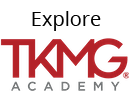

Friday was a deeply gratifying day. It was one of those joyful days that, as a improvement consultant/coach and change “facilitator,” makes up for those grueling days when facing massive resistance and disappointing days when a client doesn’t come close to reaching the potential you know they’re capable of.
It was “graduation day” for a group of 18 analysts, managers, and directors at a client who brought us in to deliver a project-based Lean development program. Yes, a program. For those of you who are about to get on your high horse and shout “blasphemy!” because I used “program” and Lean in the same sentence, hear me out.
In this case, it was an eleven-session program delivered over three months. The intent: to introduce Lean principles, practices, and tools to 18 people so they can develop Lean mindsets and behaviors.
Three of the sessions were full days, and the rest were half days. The class was divided into four project teams, each of which worked on a defined organizational problem, which provided a real-world lab in which to apply the content we introduced in the classroom. Each team had a coach assigned to them who guided their progress.
In reflecting on the first session back in October, the group was fairly evenly split between people who were eager to learn and open-minded, and people who were sporting a healthy dose of cynicism. Over the next three months, we watched the collective evolution as the class activities and project experience started to pry the door open for the “no, because…” participants, while the door was blasted wide open for the “yes, if…” group.
As project coaches, we worked them hard as they wrestled with PDSA (plan-do-study-adjust). Without fail, every team leaped to solutions and fell prey to “we know” long before they really did know. Every time we sent them back for deeper digging, you could feel a little resentment about the heavy lifting we were requiring. After all, the program and the projects were additional responsibilities for people who were already maxed out.
But by last Friday, their minds had changed. Their eyes had changed. Their ears had changed. 100% of the participants now had the CI bug. As one participant said, “I will never see the world through the same lens again.”
We watched with joy as the project teams presented their impressive results and lessons learned. By reducing waste and standardizing work, one team created 15 hours of freed capacity PER DAY (the equivalent of two additional FTEs) and created palpable pride in the workforce involved with the improvement. All four teams said they learned valuable lessons about involving the people who do the work in making improvement and not jumping to conclusions.
So…does classroom training work? It can.
Many of you have heard me blast the plethora of “green belt” programs that leave people wholly unprepared for leading improvement at any level (NOTE: some green belt programs are fantastic; some are deplorable. My criticism refers to the all-t00-common latter category.).
And I question any type of development that doesn’t include real-world application and leadership development as part of the curriculum. But, while I love the theory that people learn Lean best by participating in A3 projects and applying daily kaizen, it’s simply not practical for an organization that wants to expose a large number of people to Lean concepts as quickly as possible. Project-based classroom learning provides an efficient means to accomplish this goal.
NOW… the proof of any development “program” is directly tied to what happens after graduation. Will the students lead additional improvement and teach their staffs what they now know or will they revert to old ways, cease going to the gemba, forget to ask why, and continue to fight fires instead of preventing them? Will leadership continue to provide the time and resources for the participants to play a significant role in accelerating the development of an improvement culture? Will working in the business trump working on the business?
I’m putting my money on this organization succeeding with the jumpstart that classroom learning provided. The leadership team attended a Lean Leadership session toward the end of the course that opened their eyes to what’s needed to sustain the momentum that the class project teams created. They now understand that the participants can’t do it alone—that leadership development and support is absolutely vital for long-term success. They also understand that developing a true CI culture is going to require as much or more daily Kaizen as it does event- and project-based improvement. And that they themselves have to demonstrate Lean behaviors and use a Lean mindset to drive all decisions and actions.
So let’s check back with this client in six months and see how they’re progressing. In the meantime, I’m putting a public take in the ground that properly-designed “programs” delivered in an improvement-ready environment can indeed play a vital role in developing Lean chops.
Not all “training” is bad. So let’s check our own cynicism at the door and remember that there are a lot of ways to achieve a mission. Throwing the baby out with the bathwater is antithetical to Lean thinking.